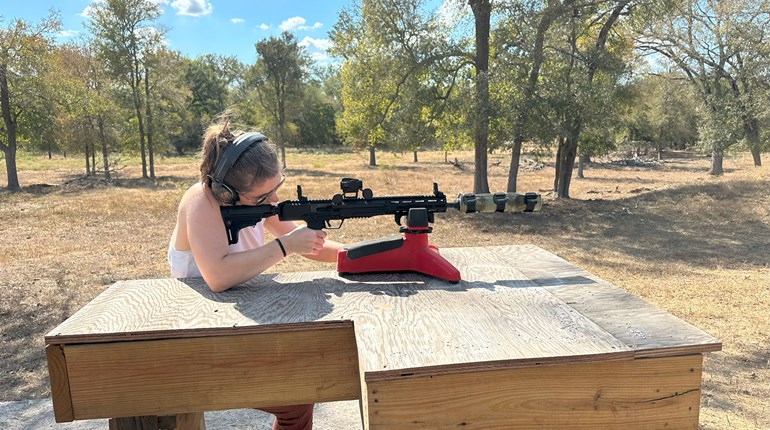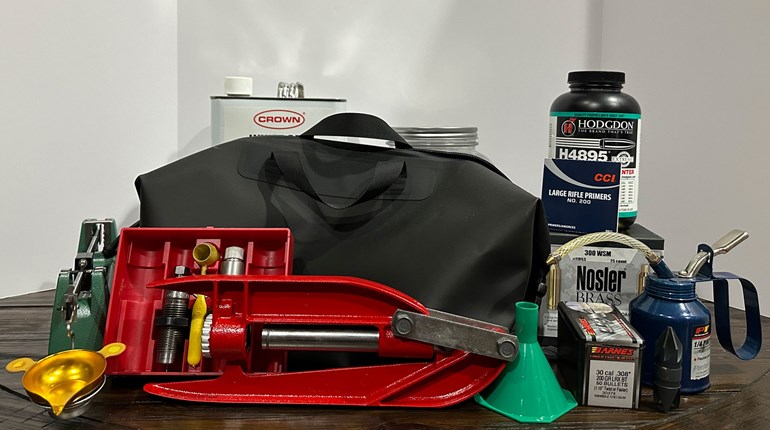
It’s not every day you draw a crazy, once-in-a-lifetime bighorn sheep tag in Colorado. It’s also not every day that you see firsthand the destructive forces of nature right across a creek in said sheep camp during sheep-hunting season. I was lucky—and almost unlucky—enough to do both.
Back in September 2023, I drew a sheep tag. On day one, as my dad and I were setting up the tent, there was a loud crashing sound across the creek from our campsite. What started as a low rumble grew into a thunderous cracking, which echoed through the valley we were in between two mountain ranges. We could see the dust, a giant trail of it, kicked up by all the rocks that just gave way and began tumbling into the creek bottom. While it only lasted for about a minute, it shows how quickly things can go south.
Needless to say, that’s not a sight you want to see before you plan to ascend those same mountainsides, but that’s what makes sheep hunts so tough. The sheep don’t just “live” there. They thrive in that environment, which makes sheep hunting all the more challenging.
I’ll spoil the ending of the hunt now. Since this article is about how to survive a rockslide, not how to get a sheep down a hill, you can probably guess I didn’t get my sheep. However, what I learned instead could save my—or your—life if I ever need to navigate similar rough terrain.
From a hunting perspective, it pays to have good equipment. I’ve got two legs compared to a sheep’s four, and I don’t have the agility, balance or speed they do. Comfortable boots with good traction, like the LaCrosse Ursa MS boots I had, let you traverse rough spots while on the move. They also reduce your chances of slipping and falling, possibly causing a rockslide yourself. For a similar reason, it pays to have good optics. Planning the right route to get through some nasty area helps you minimize or avoid traversing areas that look prone to rockslides.
The first rule of surviving rockslides is to not get in a rockslide.
According to the U.S. Geological Survey (USGS), there are several warning signs to watch for to avoid a rockslide altogether. One, keep an eye out for saturated ground in areas that were previously very dry; soft soil gives way easier, and soil gets softer when wet. Along those same lines, whenever waterways like creeks and rivers have a rapid increase or decrease in water levels, the soil in contact with the water can become unstable. The USGS also says the following areas are prone to landslides in nature:
- On existing old landslides
- On or at the base of slopes
- In or at the base of minor drainage hollows
- At the base or top of a steep cut slope
Up where I was, melting snow was likely the proximate cause of the rockslide I watched. The weather there was relatively warm for the season—read, definitely not cold enough to keep the snow solid. The USGS calls this a “freeze-and-thaw” weathering pattern, meaning the rocks were probably going to fall at some point as the small banks of snow and the wet soil keeping them in place melted and refroze.
The American Red Cross notes that storms also make rockslides more probable. The organization also advises paying attention to water clarity. If the water turns from clear to muddy quickly, it means there was some kind of disturbance upstream, which (especially when paired with the sounds of rocks smashing together or trees breaking) could be a sign something drastic is heading your way. The Canadian Red Cross also notes to pay attention to storm-water drainages – most of the time these will cut paths, much like old rockslides do.
The second rule of surviving a rockslide is protecting your head and neck.
Rockslides occur quickly; many of them (depending on the terrain and type of rock) move faster than a human can run. If you find yourself actually trapped in one, your best shot at survival is to curl up in a ball and brace yourself—it’s unlikely that you’ll be able to outrun the falling debris. This protects your head and neck, and because the landslide typically won’t cover you completely unless you’re at the bottom of its path, you might be able to dig your way out.
Ironically, what’s NOT recommended is to hide behind an object “downstream” of the rockslide, like a tree or a bigger rock or boulder. That may seem like a good idea, but it’s so very not. Here’s why.
First off, even huge and sturdy trees are unlikely to stand against thousands of pounds of gravity-driven granite moving at 20 mph. Assuming the ground above you gave way, sheltering behind a tree means that now you have a rockslide and a tree on top of you. Hiding behind a rock is also a bad idea, because it’s likely sitting on the same unstable base as the rocks uphill, and therefore it may join the rockslide, not stop it.
Furthermore, just so everyone is on the same page: a rockslide, landslide, mudslide … if it slides, the advice is all pretty much the same. Different rules apply (kind of) when you’re out in nature versus in a residential area, but these are general safety tips that, had I known sheep hunting, could’ve proved useful. I’m just thankful I was on the other side of that creek…
Epilogue
If you want to nerd out on this stuff, here’s a massive publication (147 pages) from the USGS about landslides, all the different types, causes, procedures, etc. Check it out (warning, opens into a .pdf): https://pubs.usgs.gov/circ/1325/pdf/C1325_508.pdf.







































